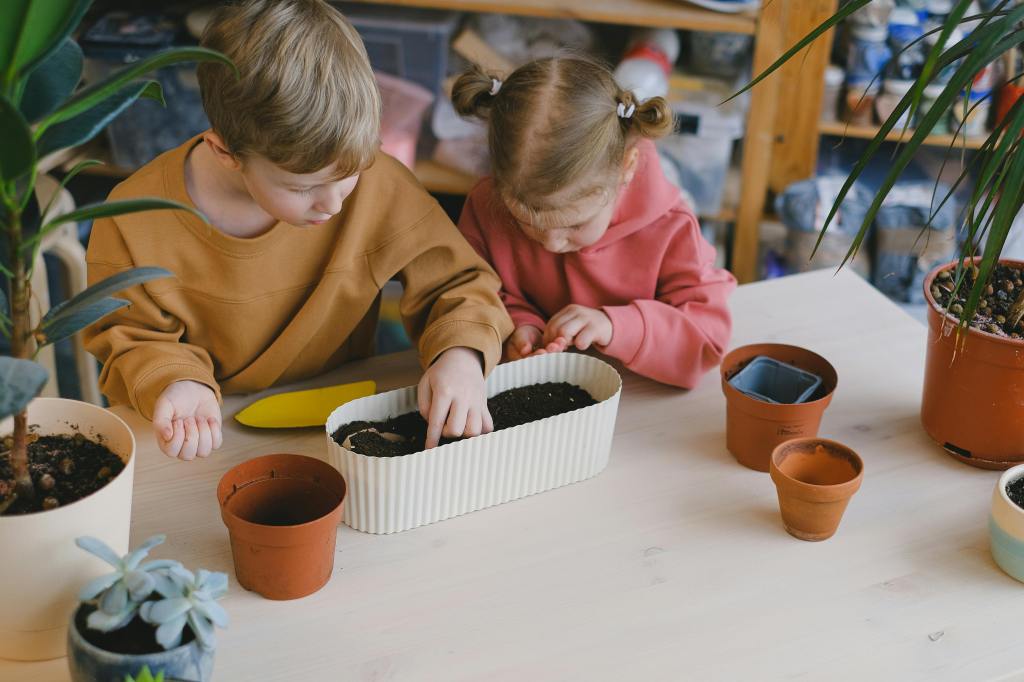
Hello there, green thumbs and budding gardeners! Today we’re diving into the magical world of indoor gardening with a special twist—it’s all about the kids! Whether you’ve got toddlers or tweens, bringing them into your gardening world is not just a fantastic way to bond, but it’s also packed with educational perks. So, grab your gardening gloves (tiny ones too!), and let’s get growing!
Why Indoor Gardening is Great for Kids
Educational Benefits: Gardening is more than just playing in the dirt; it’s a hands-on biology lesson. Kids can learn about plant life cycles, how vegetables grow, and the importance of water and sunlight.
Developing Responsibility: Taking care of plants teaches kids about responsibility and the rewards of nurturing. Watching a seed they planted sprout and grow can bring immense satisfaction and pride.
Bonding Activity: Setting aside time to garden together can strengthen family bonds—plus, it’s a lot of fun. It’s messy, it’s educational, and it’s productive.
Choosing the Right Plants
Kid-Friendly Vegetables: Quick-win veggies like cherry tomatoes, radishes, and lettuce are great starters. They grow fairly easily and quickly, which keeps the interest alive.
Herbs and Small Fruits: Herbs like basil, mint, and chives are not just easy but also useful kitchen staples. Plus, strawberries can be a sweet treat that’s exciting to watch as they ripen.
Safety Considerations: Always choose non-toxic plants for indoor gardening with kids. It’s best to steer clear of plants like foxglove or oleander, which, while beautiful, can be dangerous if mishandled.
Setting Up Your Indoor Garden
Selecting the Right Spot: A spot with good natural light and stable temperature is ideal. Make sure it’s a safe, easily accessible location where kids can see their plants often.
Containers and Tools: Opt for lightweight, durable containers and kid-sized tools to make handling easier and safer for little ones.
Soil and Planting: Mixing the soil and planting seeds can be a fun and messy activity. Let your kids get their hands dirty—they’ll love it!
Fun Gardening Projects
Grow a Pizza Garden: Plant herbs like basil and oregano, along with some cherry tomatoes. Once everything’s grown, have a pizza-making day where kids can use their home-grown toppings.
Create a Fairy Garden: Use small plants to create a fairy garden. Let the kids decorate it with stones, miniature furniture, and fairy figures.
Plant a Rainbow Garden: Choose plants with different colored leaves and flowers to teach colors and make the garden vibrant.
Daily Care and Maintenance
Watering Routine: Teach kids the right way to water plants, which is usually at the base, not the leaves. It can be their daily mini-mission.
Monitoring Growth: Help them measure the growth of their plants and document it. It’s exciting for kids to see progress and know they helped make it happen.
Harvesting: The best part of gardening! Kids can help pick the vegetables or herbs they’ve grown, which can be a proud moment.
Educational Activities to Enhance Gardening
Science Experiments: Simple experiments like regrowing vegetables from scraps (like celery or potatoes) can be fascinating and educational.
Art and Crafts: Use leaves for leaf rubbings or paint using flower petals. It’s a great way to bring creativity into gardening.
Journaling: Encourage kids to keep a garden journal. Drawing what they see helps them pay attention to detail and celebrate every little success.
Safety Tips
Safe Gardening Practices: Use only child-safe tools and non-toxic plants. Ensure any sharp tools are used only under adult supervision.
Handling Pests and Problems: Teach kids about organic ways to handle pests, like making a simple soap spray or picking off pests by hand.
Conclusion
Indoor gardening with kids isn’t just about growing plants; it’s about growing young minds too. It teaches science, responsibility, and creativity, all wrapped up in one fun, family-friendly package. So why wait? Get those pots ready, pick out some seeds, and watch as your indoor garden—and your little gardener—flourishes!